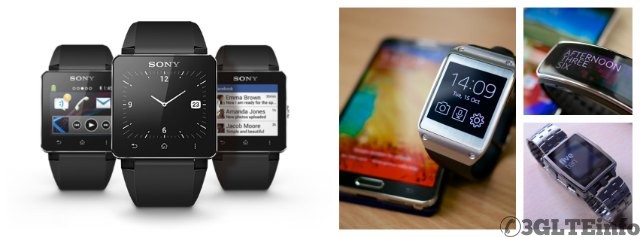
Samsung, SONY, Qualcomm are already offering smartwatch and other wearable solutions. Then why there is little or none enthusiasm towards these products. Are these new and advanced watches have some basic problem which need to be addressed as soon as possible?
In a time when all Smartphone manufacturers are jumping into smartwear business, it seems that there is no real chipset available which are optimized for smartwatches. All of the manufacturers are either using chipsets developed basically for smartphones or tear-down versions of those.
Though these already available solutions are solving the purpose, these solutions have more drawbacks. For instance power consumption in these devices are not optimized enough.
I also own one of these wearable device. But because of the power consumption issue I do not use my fitness tracking band anymore as I need to change it every three day and as a result it is now lying somewhere on my work desk.
Lets checkout some of the smartwatch and smart gear solutions available in the market right now and what chipsets they are using to have a clear picture why these are already failed or going to fail in long run.
Samsung Gear
When we talk about smartwatches, Samsung is one of the first to introduce these kind of devices in market. The first Samsung Gear smartwatch was an unsuccessful project, with many issues from power consumption to stability and compatibility.
First generation Gear smartwatch was powered by a dual-core 800 MHz (one disabled) Exynos system-on-chip. Samsung disabled one core to reduce power consumption.
The big issue with Samsung Gear was Android. Samsung opted for Android on smartwatch when Android was basically designed for smartphones and tablets.
Android was one of the big reason why Gear smartwatch was so power hungry.
Samsung Gear 2
Samsung latest effort to re-innovate it’s smartwatch project came in the shape of Gear 2. Though the company tried many things to fix the problem of power consumption and provide better user experience it failed to do so.
So what powers a Samsung Gear 2 smatwatch?
Gear 2 is powered by Exynos 3250 dual-core chipset clocked at 1Ghz. Onlike the original Gear smartwatch, Gear 2 has both the core enabled. This is done to provide better user experience. Samsung cited another reason for this bold step.
According to Samsung Android was power hungry, so they replaced Android with Samsung’s in-house mobile OS Tizen. But is Tizen is good for small wearable devices with small battery?
Also why one need a dual-core processor on a smartwatch with limited functionality.
Official specification says Samsung Gear 2 will last for 2 to 3 days with every recharge. Is that enough?
Sony SmartWatch
Sony started SmartWatch concept much before anyone talked about wearable devices. The first generation of Sony smartwatch was neither powerful nor feature rich.
Sony opted for STM32F205RG chipset. The key specifications of Sony smartwatch are:
– CPU: STM32F205RG (120MHz)
– RAM: 128KB
– Flash: 1MB
– OS: uC/OS-II
– BlueTooth: Yes (3.0)
– Fm Radio: Yes (disabled)
– LCD: 1.3″ OLED
– Res: 128 x 128
– Touchscreen: Yes (Capacitive)
– Battery – 110mAh
SmartWatch 2
Sony’s second offering Smartwatch 2 is also not so ground breaking. Sony opted for a little more powerful 200 MHz ARM Cortex M3 processor. Sony claims the newer smartwatch has a battery life of 2 to 3 days.
But the main problem with any smartwatch is the heavy dependency towards a smartphone. Which is a bottleneck for many of these similar devices.
Though many of the other vendors are working to bring better solution for next generation wearable devices, the main problem lies underneath. Someone has to create a better and smarter dedicated chipset with very little power consumption and powerful enough to run as a standalone device with it’s own operating system and apps.
The whole picture will be more clear in coming months when other manufacturers will release their version of smart wearable devices. The one with the correct vision and technology will definitely win the race.
